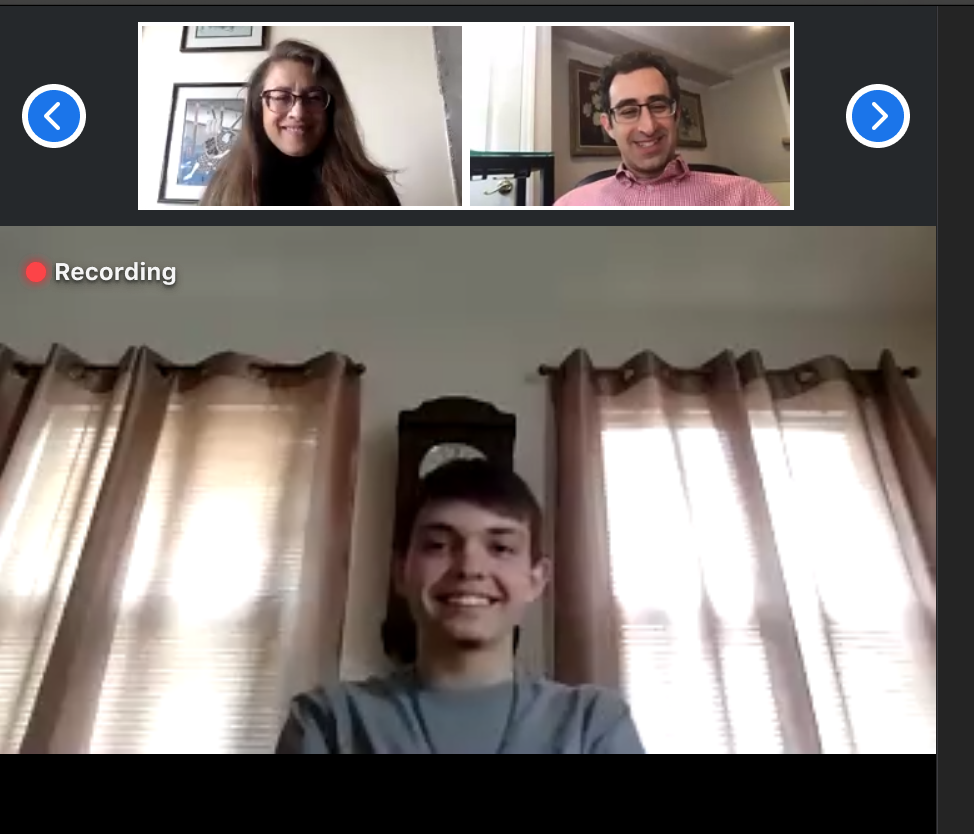 The last few months have been quite challenging for educators and learners. With school buildings closed, we have had to create remote learning opportunities to help our students. Some students have thrived during this time while others have not yet checked in. Most students fall somewhere between these extremes. Regardless, I think we can all agree that this time has challenged us to consider how we deliver instruction and help our learners progress. As a scientist and educator, I fully understand the role that disruptions can cause. Our geological record is covered with the signs of major disruptions that signal how climate and life has changed over time. I believe that we are essentially at this point with education. Many of the professional learning sessions I have attended in the past several weeks have alluded to the importance of using this time to reconsider and reimagine how we are helping students to learn. We must place emphasis on learning here, not grades or other measures. In fact, as I reflect, I think that it is time that we reinvent our education system to really focus on learning and not metrics that reduce learning. We must also also use this opportunity to shift mindsets and philosophies from preparing students for an industrial world to one that prepares our learners to live and thrive in an information age. One of the more interesting connections that I made during this time is a partner that my home school system, Rowan-Salisbury Schools, is partnering with is Transcend (@TranscendBuilds). Transcend is an organization dedicated to supporting communities in creating and spreading extraordinary, equitable learning environments. I love that the focus on disrupting inequity in education. As a technology facilitator, I have seen our system reduce in equity by providing students with a device that the majority take home. As our chief technology officer recently shared over 99.4% have devices at home during our building closures. For those who do not, I am guessing this is due to either a device repair (even though efforts have been made to provide students with devices) or a personal choice not to take the device home. When our system first transitioned to its 1-to-1 initiative, I was teaching science at Salisbury High School. I remember that we distributed devices in late August which is typically very hot and oppressive in North Carolina with our humidity relentless. I recall leaving school and walking our main door to see several students who lived over two miles away that walked back to school. They were trying to figure our their Z-Scaler passwords for accessing internet outside of the school. They said that they walked over from one of our larger public housing centers in our city. After helping them, I recall thinking that this may be the first time that many of these students have ever had a laptop in their home. This definitely changed the game as the 1-to-1 initiative put all gave all students a device and access regardless of their personal circumstances. This initiative has continued to make a huge difference in the learning opportunities for all students. It has reduced a major source of inequity in our community. This is not to say that we have reduced all inequity in our system though. We still struggle with making sure that all our students have access to internet while at home. We also have other inequities based on the support that students may have at home, their ability to use different software programs, and even with teacher preparedness. As a technology facilitator, I have supported teachers in remote learning. I have been so amazed at how much many of our teachers have progressed in become more effective in digital learning. Many of our teachers have grown exponentially in their professional learning. Our own school system has offered extensive array of professional learning opportunities including webinars. Our educators have also engaged in many other opportunities. As a result, our educators have customized and chosen their own individual professional learning opportunities. As a result, they are learning and acquiring new skills that matter to them. This has customized their own learning and resulted in educators who are more satisfied with their professional learning. As we continue to work through this pandemic, we must use these lessons learned to customize our education for our students just as educators have customized their professional learning. As we look toward the fall, it is my hope that we will continue to use this disruption to create an education system that is much more equitable to all students. I hope that we use the lessons learned during this disruption to create a better education system where we are focused on learning, not measures that negate true learning such as test scores, with educators who are well supported with extraordinary professional learning. We must work toward creating an accountability system that is tied to our community expectations, not one that serves bureaucratic establishments that rewards and diminishes students based on personal circumstance or zip code. Now is the time to make a definitive break in our education record and create a new and better system just as we see in different strata in our geological records.
1 Comment
1/23/2024 08:19:11 pm
In your opinion, how can the insights and perspectives shared in the article be applied to your own approach as an educator or learner in the current educational landscape? regard <a href="https://ble.telkomuniversity.ac.id/">Telkom University</a>
Reply
Leave a Reply. |
Brian's Blog
The ideas shared here are my own and do not necessarily represent my employers, associations, or organizations. These thoughts are entirely my own. Archives
May 2024
Categories |
 RSS Feed
RSS Feed